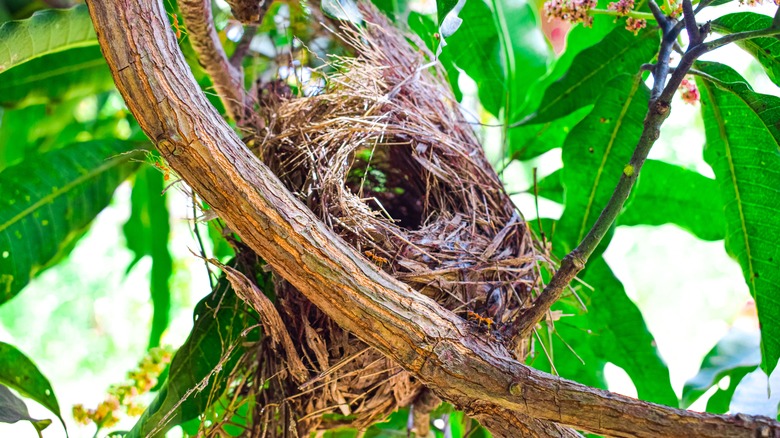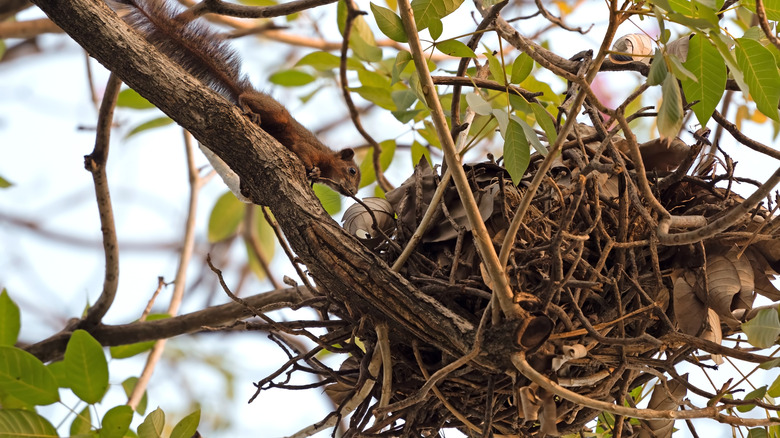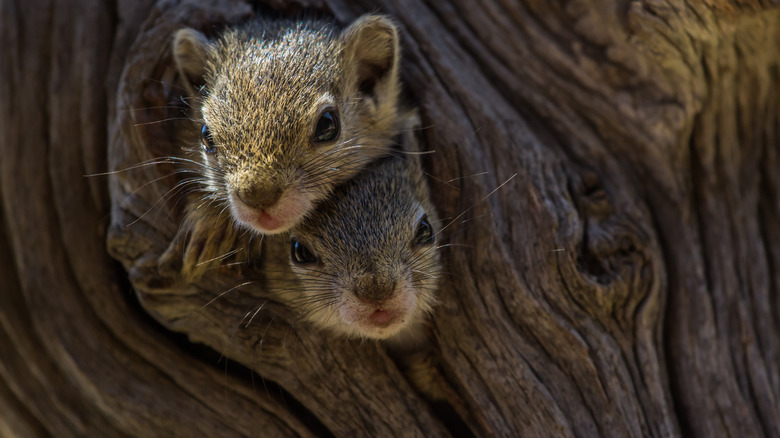You're Likely Mistaking This Hungry Garden Pest's Nest For A Bird Nest
The mass of sticks, grass, and leaves on top of your conifer may not be a bird nest. Instead, chances are it's housing the squirrel you've been trying to keep out of your yard for a while now. Unlike most humans, squirrels live the American dream, building multiple nests or "dreys" for their acrobatic escapades and food storage. In fact, these greedy creatures are more than happy to take over a woodpecker's or rook's forsaken den.
The answer is clear-cut if you wonder why these ground runners nest in trees. The tree's height helps keep a safe distance from the ground predators looking to mess with squirrels and their kits during the mating season while giving these creatures a vantage point to zero in on their prey. Not to mention, munching on nuts and fruits is easier. So, if you're tired of messy garden beds and suspect squirrels are at play, examine the nests atop branches and assess if they're harboring these varmints.
Identifying squirrel nests
The quickest way to determine if a squirrel is hoarding space on your tree is to catch it in action, like watching it climb the branches to rest, especially during the winter. But if that's not your style, look for other telltale signs. Squirrels mass together twigs, bark, moss, and leaves into an eight-inch-wide, ring-shaped drey with more mass and weight than a bird's nest but lacking their softness. While their nests are high, they aren't avian-level high, sitting at about 20 feet (or 30 feet if it's a gray squirrel) for better weight support and protection from natural elements.
However, things can get tricky if these tiny mammals are lodged in a tree's hollow that was once a pecker's abode. If you believe this might be the case, inspect the tree's bark for fresh markings and messy half-chewed pine cone piles, indicating a squirrel's presence. And if you're still doubtful, wake up early or skip the siesta and prick up your ears for a squeaky kuk-kuk-kuk or muk-muk sound.
Getting rid of squirrel drey
Once you've identified the nest belongs to a squirrel, it's time to determine if you want to remove it and the accompanying pests. If you'd rather not harbor these freeloaders, don't attempt to remove get rid of the drey yourself, and contact a professional. Given how squirrels kick off their nest-building activity when their kits are being schooled for adulthood—around June-July—the mother mammal will act protective and won't shy away from scratching anyone trying to remove them from their property. These critters can bite, too, which won't bode well for your health.
The bushy-tailed pests harbor ticks, which are responsible for causing a fever-inducing and lymph-swelling disease called tularemia. They're also notorious for transmitting infections and diseases like ringworm and typhus to humans. So, considering the risk, hire an animal control or tree service company to remove the squirrel nest. However, note that many states have banned the removal of squirrel nests if they're harboring little kits. While you wait, also check if the squirrels used a covert way of entering your property or home and building their dreys. Have the professionals remove them for you and take preventative measures in the future. You may need to fork out anywhere between $200 and $600 to get rid of squirrels and their nests.


